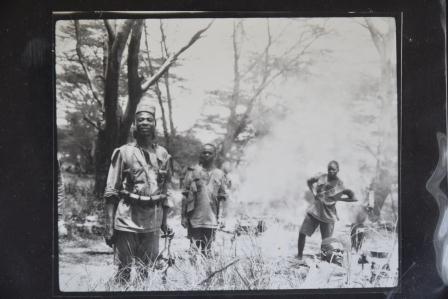
African troops in the field (catalogue reference: CAB 45/11/51c)
The German Cameroons was the final German colony to fall in West Africa during the First World War, and effectively ended the conflict in the west.
The campaign was fought mainly using African soldiers from the West African Frontier Force (WAFF) [ref]1.West African Frontier Force was made up of the Nigerian, Sierra Leone, Gambia and Gold Coast Regiments. [/ref], and this post will look at the records that can bring to life the environment and give us an insight into who some of the troops were. We can use photographs, sketches and written records to view the people, the countryside and the fighting.
To start, we can look a map that shows the paths that the many separate columns took, with Brigadier General Cunliffe’s coming in from north, Brigadier General Dobell’s from Duala in the south and French and Belgium’s coming from the east. The job of coordinating the campaign over a large area in challenging conditions, having to divide forces, and having limited or poor intelligence, meant that it took 18 months to gain control of the Cameroons.
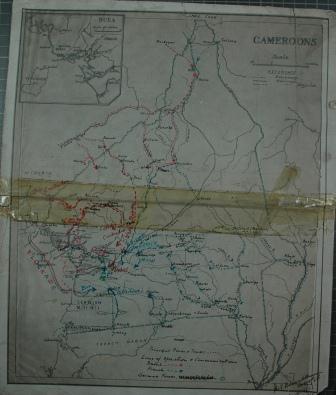
Cameroons 1910 map (catalogue reference: WO 95/5388)
Correspondence shows that Brigadier General Dobell, who was commanding the Allied forces, was aware that conquest of the colony would not be easy. The Cameroons covered around 306,000 square miles of mainly uncharted territory and was defended by a well led and well trained African force, plentifully supplied with machine guns. Allied forces amounted to around 4300 West African troops, boosted to 9700 in November 1915 with the arrival of Indian troops.
Neither the climate nor the character of the country favoured the offensive: officers and men were exposed to the most trying conditions, like incessant tropical rains, the absence of roads or even paths, and dense African forest. The country in the immediate vicinity of Duala is typical of the greater portion of the Cameroons in which troops operated (WO 32/5320).
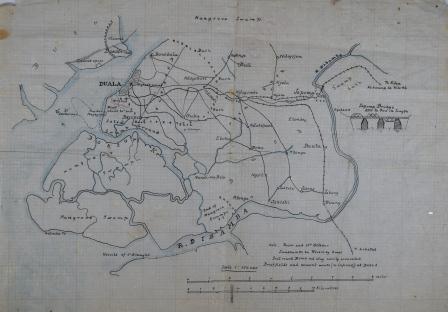
Map showing area South and South West of Duala, Cameroons, West Africa (catalogue reference: WO 153/1205)
The map describes the landscape and we can use photographs, sketches and the descriptions in the unit war diaries to get a better understanding of what the environment looked like and the difficulties troops faced.
- Sketch depicting Ekom on the Cameroon boarder (catalogue reference: WO 95/5884)
- Aerial photograph (catalogue reference: AIR 1/432/15/260/26)
Long grass, dense African woodland, Mangrove swamps, thick bushland and rivers would all have to be overcome to take control of the colony.
We can look at extracts from a war diary to show that lack of intelligence, the conditions and a lack of experience created confusion and inefficiencies in the early days of the campaign. The operation against the entrenched enemy near Gazabu, 16-17 November 1914, would sum up the problems: an account describes the difficulties faced when dealing with the weather, terrain and the inexperience of the British and African troops. Poor intelligence led to an attack against a well-defended fort. The attack ended up with six soldiers advancing, when ‘Lock’ later gauged that half a company at least was required. A ‘companies’ establishment for the Nigerian Regiment was set at 139 men in 1914, so around 70 men would have improved their chances (CO 445/24).
- War diary detailing Gazabu 1914 (catalogue reference: WO 95/5382)
- War diary detailing Gazabu 1914 – page 2 (catalogue reference: WO 95/5382)
- War diary detailing Gazabu 1914 – page 3 (catalogue reference: WO 95/5382)
- War diary detailing Gazabu 1914 – page 4 (catalogue reference: WO 95/5382)
What can the records show us about the African troops? We will take a look at Regimental Sergeant Major Belo Akure, DCM, MM.
Firstly, we can tell that Belo came from Akure in Nigeria: the surnames of troops of the WAFF were normally the town or area they came from, though men in some of the regiments used their tribe’s name. The war diaries for the 4th Nigerian Regiment contain nominal rolls, and we can see Belo is listed under No.1 section. The record is annotated with details of when he was wounded in 1915.
The war diary in WO 95/5386 details that Belo was to be awarded the Distinguished Conduct Medal (DCM) for his conduct on 4 November 1914, and through a number of other records we can find accounts of what the award was for. There are draft accounts in WO 32/4977 that detail the action, but do not include dates. Then, there are two medal cards for Belo: WO 372/2/92634 and WO 372/23/78890 (for the later Military Medal award for actions taken in German East Africa). The Good conduct register also lists a previous DCM award for bravery in 1908/09 in Southern Nigeria.
The records allow us to get a snapshot of an individual soldier’s experiences, like Belo. He entered the conflict in West Africa on 29 September 1914, was awarded the DCM for his actions 4 November 1914, and was wounded 14 April 1915. As he was awarded the Military Medal Award for bravery in March 1917, we can trace the action through the war diary covering March 1917 in WO 95/5347.
- West African Frontier Force and King’s African Rifles: register of Good Conduct, Distinguished Conduct and Long Service and Good Conduct Medals (catalogue reference: WO 125/25)
- Nominal roll 4th Nigerian Regiment (catalogue reference: WO 95/5387)
- Nigeria Gazette entry, November 1915 (catalogue reference: CO 658/4)
- Belo Akure mentioned in war diary (catalogue reference: WO 95/5386)
There are other records that could contain information and help build a picture of the individuals, series such as CO 445 and WO 100.
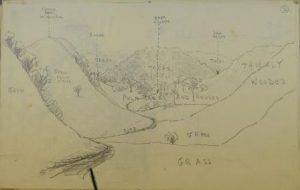
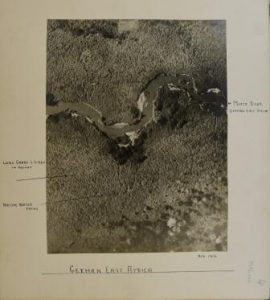
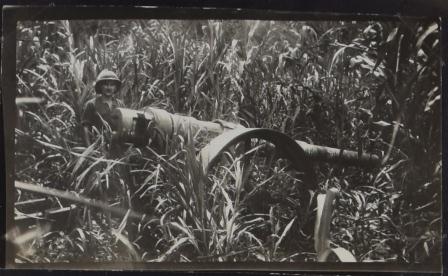
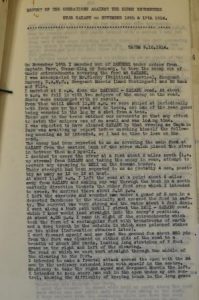
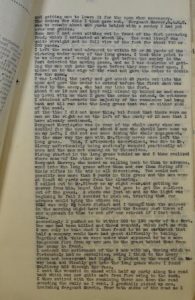
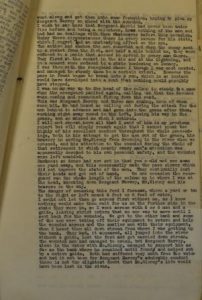
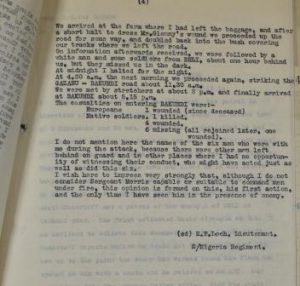
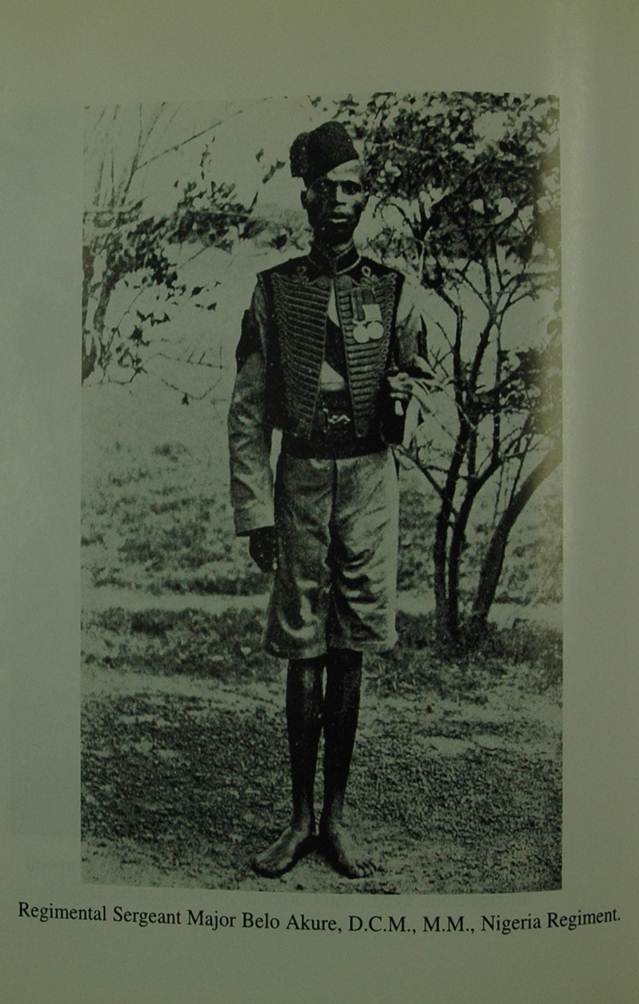
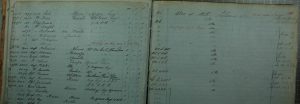
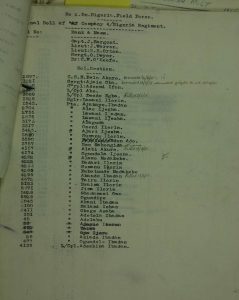
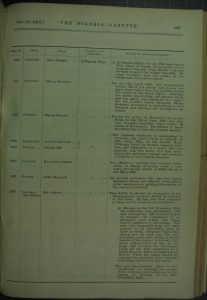
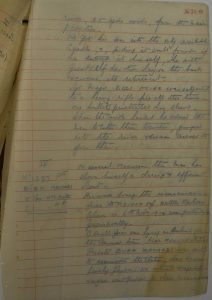
Martin, these are great posts on Africa showing what is available in the archive.
It would be very helpful if there could be an email follow button or something on the site for us to sign up to. RSS doesn’t work for everyone. It will help increase your (and TNA’s) following. Thanks
Best wishes
Anne
Thank you for your comments Anne, I shall certainly pass your comments on to colleagues and let you know what they say.
[…] 0 […]
Hi Martin, this is a very interesting article.
I have come across some Medal Index Card data that needs correcting for some of the troops that make up the West Africa Field Force. I came across this as a result of some volunteering work for the IWM, on their “Lives of the First World War” project.
What is the best way to get the updates made to Discovery? I’m thinking that a list or table would be the best way for the change to be made. Would it be possible for someone in Andrew Janes’s team be able to get in touch with me. I did leave some feedback recently, but have heard nothing back from TNA.
Given there are some identified data improvements, it would make sense to have these applied to Discovery.
Regards, Keith
Hi Keith,
Thank you for your comments and question – I will certainly Make Andrew aware of your request. To start It may be worth dropping a message to the Discovery team via the web form http://www.nationalarchives.gov.uk/contact/contactform.asp?id=19 (Discovery). That would certainly get the process started.
Regards,
Martin
Thank you for your comment, Keith.
The data in Discovery comes from several different sources and the data for individual medal index cards isn’t something that my team is responsible for. I’ve checked with the team that maintains this data and they have made some corrections following your suggestions. Thank you for helping us to improve our data for the benefit of other researchers.
If you have a list of further corrections to suggest, please do get in touch with my colleagues using the contact form as Martin suggests.
For the benefit of other researchers reading this, I’ll just add that the simplest way to suggest a one-off correction to a particular Discovery entry is to use the link under the ‘Found an error?’ heading on the right-hand side of the page.
Dear Martin and James, thanks for your responses. My apologies for not replying sooner, an urgent and time consuming task came up a week ago, and now the project milestone is met, I am now turning my attention to other tasks. Thanks for the acknowledgement that my suggested corrections have been actioned by the Discovery team.
I have yet to receive any e-mail feedback from the Discovery team at The National Archives. Given that a large number of data improvements have been identified, it would be inefficient to reply to each individual card item. The provision of a spreadsheet or similar table would be the most efficient manner to allow for an Extract Transform Load script to be written, so as to correct several records at the same time. I will fill out a further correction form, but would be appreciative of e-mail feedback this time.
I have found it interesting that for some of the African soldiers who received the 1914/15 Star, a number were present in the African theatres of war before some of their BEF counterparts who received the 1914 Star.
Martin, this article is a really great way for the general reader to be aware of some of the esoteric items that the National Archives has, and that the “World War” aspect of this conflict tends to be overshadowed by the fighting on the Western Front.
Dear Keith,
Thank you for your further comments – I will follow up with colleagues about the amendments. The idea behind the series of posts, was to try and give reader’s a flavour of the conflict in Africa and ideas of where to look if they are interested in researching some of the many interesting aspects of the conflict.
Ref the photo of Col Sgt Major Belo Akure. I have the jacket that he is wearing. Scarlet with gold facings. My Grandfather Sgt A Hunt MM (Devon Regt.) 4th Nigeria Regt WAFF served and fought along side Col. Sgt. Maj.Belo Akure in German East Africa at the Battle of Mahiwa. He was given the jacket, a hat and a Col Sgt sash when he left the Rgt. The jacket is framed on my office wall. The hat and sash are lost. I have my Grandfathers medals and paper work. My Grandfather also gave me a copy of the book ‘The Nigerian Regiment in East Africa’ which I have. My Grandfather died in 1966.
Jon
Sorry, Company Sgt Major!..
Thank you for your comments Jon.
It is fascinating to hear that you are in possession of Belo’s jacket, and great to hear that it has survived. I thought you may be interested to know that the war diary that covers the battle 15-18 October 1917 (WO 95/5325/8) lists your grandfather Sgt A Hunt as being slightly wounded 15/10/17. The casualty details for the 4th Nigerian Regiment, records 13 Europeans and 122 African’s killed or wounded during the battle. The record gives good detail of the fighting and has diagrams and plans that show the engagement, it also records the ration allocation for Europeans and African’s of the 4th Nigerian Regiment in October 1917
This is a great treasure trove of information and a brilliant example of how a blog post can really bring a topic alive. Thumbs up to the public engagement team. I am curating an exhibition about African Soldiers in WW1. https://www.brent.gov.uk/services-for-residents/brent-museum-and-archives/exhibitions-and-projects/back-from-the-western-front-african-soldiers-of-the-great-war-in-britain/. We will be featuring Belo Akure in our exhibition as he attended the British Empire Exhibition in 1924. It would be great if I can connect with Jon Yabsley as we would be interested in including this personal story in our exhibition. It would also be great if we could loan Belo’s jacket.
Thanks Martin.
This is indeed a treasure grove of information on the war in the Cross River area of Cameroon. Seeing those photos places you right at the centre of history. Thanks a million.
Can photos of the Cross River Column in Ossidinge be made available too?
Thanks
My great-grandfather spent almost year in the German Kameroon. He arrived on the HMS Astraea at the mouth of the Douala River on the 21st April 1915 and sailed up the river to arrive at Douala on the 28th April 1915 and remained until 18th April 1916. I can gather this from his RN record and the ships’ log for the HMS Astraea. But I cannot understand why the vessels was stationed there for a whole year.